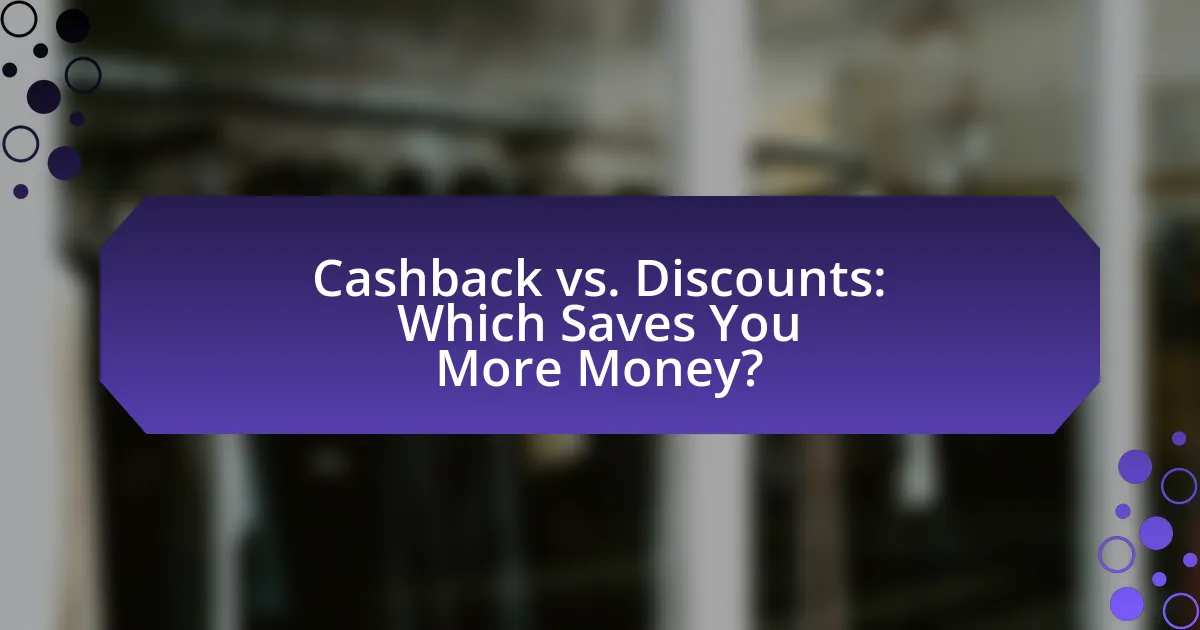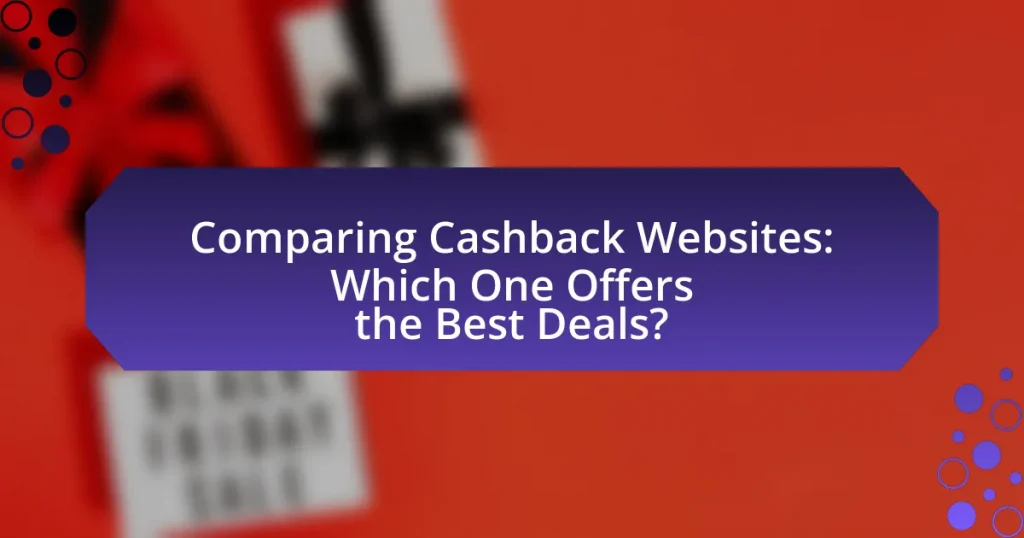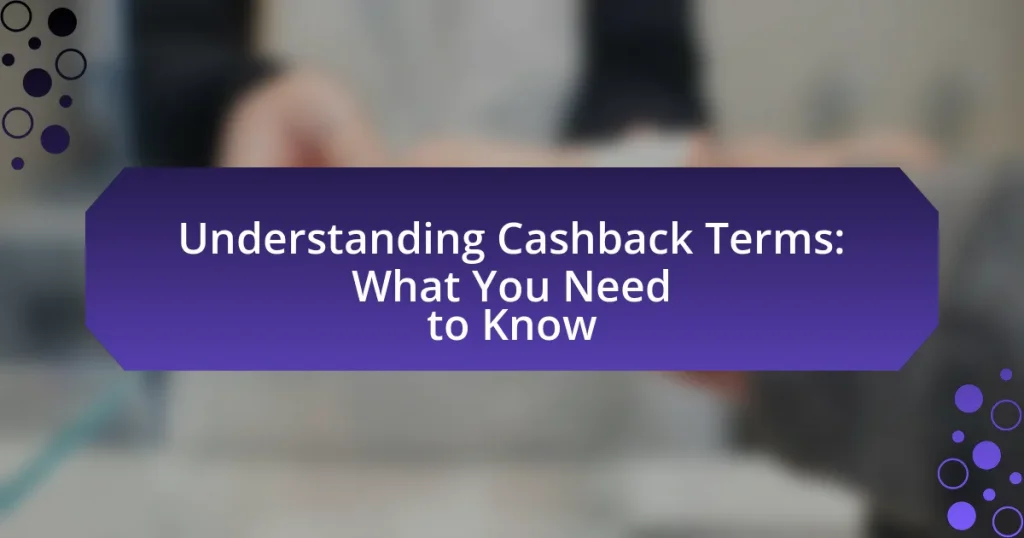Cashback and discounts are two prevalent financial incentives that help consumers save money on purchases. Cashback involves receiving a percentage of the purchase amount back after the transaction, while discounts provide immediate price reductions at the point of sale. This article explores the differences between cashback and discounts, their respective advantages, and how they impact overall savings. It also examines scenarios where one option may be more beneficial than the other, factors influencing consumer choices, and strategies for maximizing savings by effectively combining both methods.
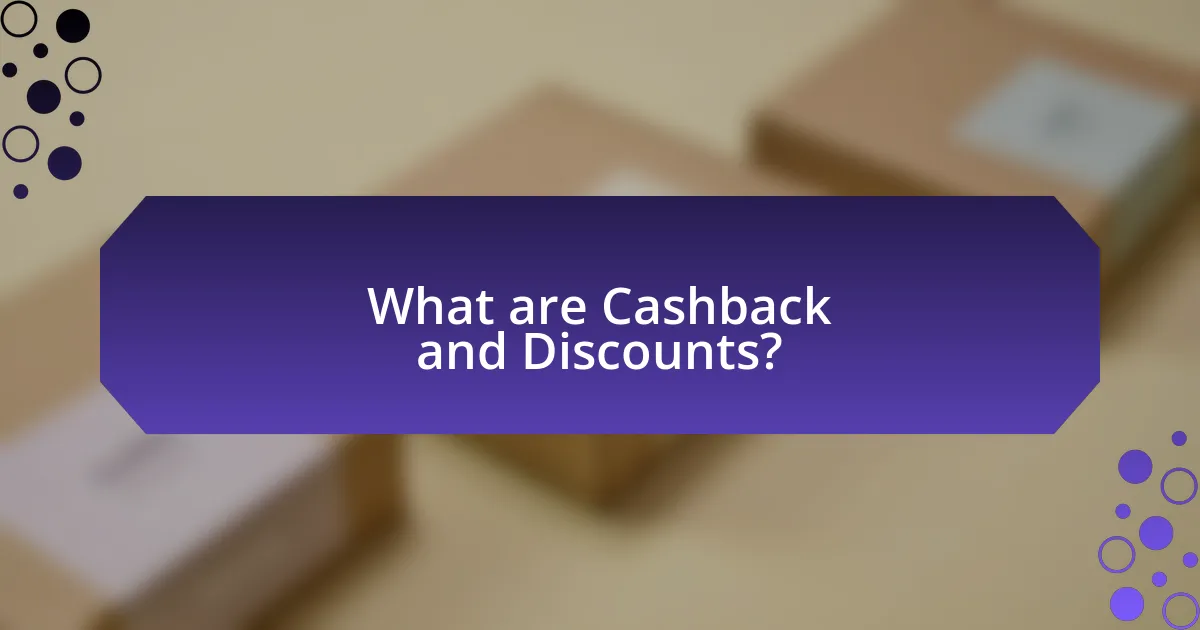
What are Cashback and Discounts?
Cashback and discounts are both financial incentives that reduce the cost of purchases. Cashback refers to a percentage of the purchase amount returned to the buyer, often through credit cards or loyalty programs, incentivizing spending while providing a monetary reward. Discounts, on the other hand, are immediate reductions in the price of goods or services, typically expressed as a percentage or fixed amount off the original price, encouraging consumers to buy by lowering the upfront cost. Both methods aim to enhance consumer savings, but they operate differently in terms of timing and application.
How do Cashback and Discounts differ in concept?
Cashback and discounts differ in concept primarily in how they provide savings to consumers. Cashback offers a percentage of the purchase amount returned to the buyer after the transaction, effectively rewarding them for spending, while discounts reduce the upfront price of a product or service at the point of sale. For example, a 10% cashback on a $100 purchase results in a $10 return after the purchase, whereas a 10% discount lowers the price to $90 before payment. This distinction highlights that cashback incentivizes future spending through rewards, while discounts provide immediate savings.
What is Cashback and how does it work?
Cashback is a financial incentive where consumers receive a percentage of their purchase amount back after making a transaction. This mechanism typically works through credit cards, online shopping platforms, or loyalty programs that offer a rebate on purchases. For example, if a consumer buys a product worth $100 with a cashback offer of 5%, they would receive $5 back, either as a statement credit, direct deposit, or points redeemable for future purchases. Cashback programs encourage spending by providing a tangible reward, making them appealing to consumers looking to save money on their purchases.
What are Discounts and how do they function?
Discounts are reductions in the original price of goods or services, designed to encourage purchases. They function by lowering the cost to the consumer, making products more attractive and accessible, which can lead to increased sales volume. For example, a retailer may offer a 20% discount on a product, effectively reducing its price from $100 to $80, thereby incentivizing customers to buy. Discounts can take various forms, such as percentage reductions, fixed amount reductions, or promotional offers, and are commonly used in marketing strategies to boost customer engagement and drive sales.
What are the advantages of Cashback and Discounts?
Cashback and discounts both provide financial benefits to consumers, enhancing their purchasing power. Cashback offers a percentage of the purchase amount returned to the buyer, incentivizing spending and rewarding loyalty; for example, a 5% cashback on a $100 purchase results in a $5 return. Discounts, on the other hand, reduce the upfront cost of a product or service, making it more affordable; a 20% discount on a $100 item lowers the price to $80. Both strategies encourage consumer spending, with cashback often leading to repeat purchases and discounts attracting new customers.
How does Cashback benefit consumers?
Cashback benefits consumers by providing them with a percentage of their spending returned to them, effectively reducing the overall cost of purchases. For instance, if a consumer spends $100 on a product with a 5% cashback offer, they receive $5 back, making the net expenditure $95. This incentivizes consumers to shop more frequently and choose specific retailers that offer cashback programs, which can lead to significant savings over time. According to a study by the National Retail Federation, 70% of consumers reported that cashback offers influence their purchasing decisions, highlighting the effectiveness of cashback in enhancing consumer savings.
What are the benefits of Discounts for shoppers?
Discounts provide shoppers with immediate financial savings, allowing them to purchase items at reduced prices. This reduction in cost can lead to increased purchasing power, enabling shoppers to buy more products or higher-quality items than they could at full price. According to a study by the National Retail Federation, 70% of consumers reported that discounts influence their buying decisions, highlighting the effectiveness of discounts in driving sales and customer satisfaction. Additionally, discounts can encourage shoppers to try new products or brands, as the lower price reduces the perceived risk associated with the purchase.
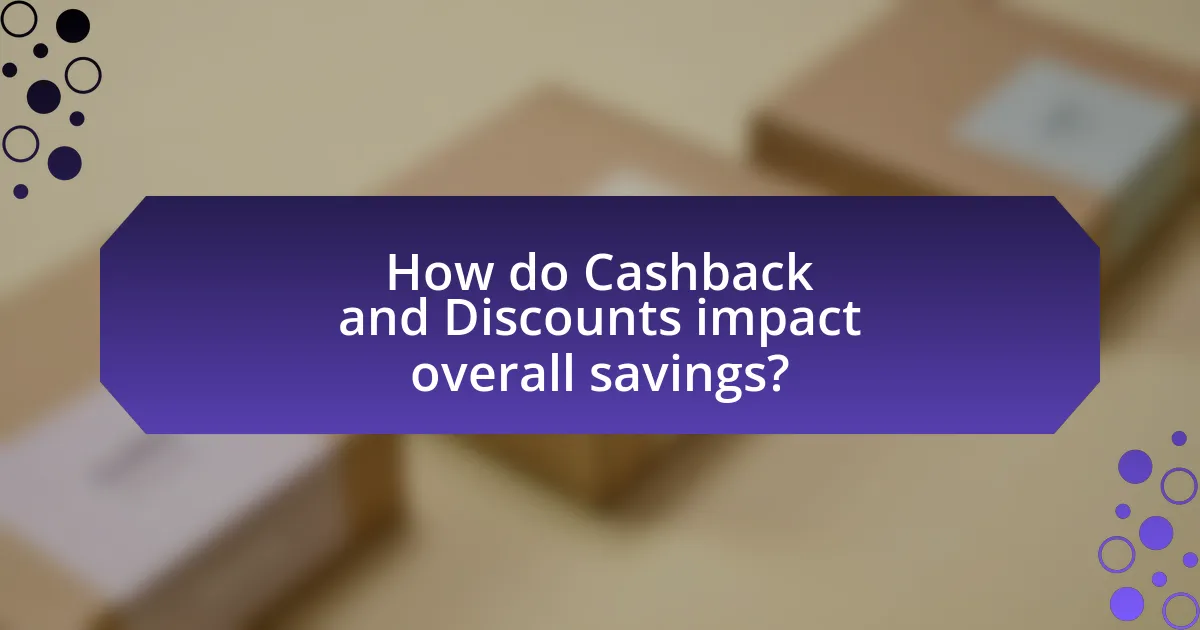
How do Cashback and Discounts impact overall savings?
Cashback and discounts both significantly enhance overall savings, but they do so in different ways. Cashback provides a percentage of the purchase amount back to the consumer, effectively reducing the net cost of the item after the transaction. For example, if a consumer spends $100 with a 5% cashback offer, they receive $5 back, resulting in a net expenditure of $95. Discounts, on the other hand, reduce the purchase price upfront. If the same item is offered at a 20% discount, the consumer pays $80 immediately, saving $20 compared to the original price.
In terms of overall savings, cashback can be more beneficial for frequent shoppers who accumulate rewards over time, while discounts provide immediate savings on a single transaction. Research indicates that consumers often prefer discounts for immediate gratification, but cashback can lead to greater savings in the long run if utilized effectively. Thus, the impact of cashback and discounts on overall savings varies based on shopping habits and preferences.
Which option typically offers greater savings?
Cashback typically offers greater savings compared to discounts. Cashback rewards return a percentage of the purchase amount to the consumer, which can accumulate over time, especially on larger purchases or frequent transactions. For instance, if a consumer spends $1,000 with a cashback rate of 5%, they receive $50 back, whereas a 10% discount on the same purchase would only save them $100 upfront but does not provide ongoing benefits. This cumulative effect of cashback can lead to higher overall savings for consumers who regularly utilize cashback programs.
How do you calculate savings from Cashback?
To calculate savings from cashback, multiply the total amount spent by the cashback percentage offered. For example, if you spend $100 and the cashback rate is 5%, your savings would be $5, calculated as $100 x 0.05. This method provides a straightforward way to determine the actual savings received from cashback offers, allowing consumers to compare it effectively against other savings methods, such as discounts.
What is the formula for determining savings from Discounts?
The formula for determining savings from discounts is: Savings = Original Price x Discount Rate. This formula calculates the amount saved by multiplying the original price of an item by the percentage of the discount offered. For example, if an item costs $100 and has a 20% discount, the savings would be $100 x 0.20, resulting in $20 saved. This method is widely used in retail to help consumers understand the financial benefits of discounts.
Are there scenarios where one is better than the other?
Yes, there are scenarios where cashback is better than discounts and vice versa. Cashback is more advantageous when the total purchase amount is high, as it provides a percentage back on the total, potentially leading to greater savings over time. For example, if a customer spends $1,000 with a 5% cashback offer, they receive $50 back, which can be more beneficial than a flat discount of $30 on the same purchase. Conversely, discounts are preferable for smaller purchases or when immediate savings are needed, as they reduce the upfront cost directly. For instance, a 10% discount on a $100 item saves $10 immediately, which is more beneficial than waiting for cashback. Thus, the choice between cashback and discounts depends on the purchase amount and the consumer’s immediate financial needs.
In what situations is Cashback more advantageous?
Cashback is more advantageous in situations where the total purchase amount is high, and the cashback percentage exceeds the value of available discounts. For example, if a consumer spends $500 on a purchase with a 5% cashback offer, they receive $25 back, while a 10% discount would only save them $50 upfront. In this case, the cashback option provides a greater overall benefit when considering future spending or accumulation of cashback rewards. Additionally, cashback rewards can often be redeemed for various purposes, enhancing their value compared to one-time discounts.
When should you prefer Discounts over Cashback?
You should prefer discounts over cashback when you want immediate savings at the point of purchase. Discounts reduce the total price upfront, making it easier to see the savings in real-time. For example, if an item costs $100 and has a 20% discount, you pay $80 immediately. In contrast, cashback typically requires a waiting period before you receive the money back, which may not be as beneficial for immediate financial needs. Additionally, discounts are often more straightforward and can be applied to a wider range of purchases, while cashback offers may have restrictions or minimum spending requirements.
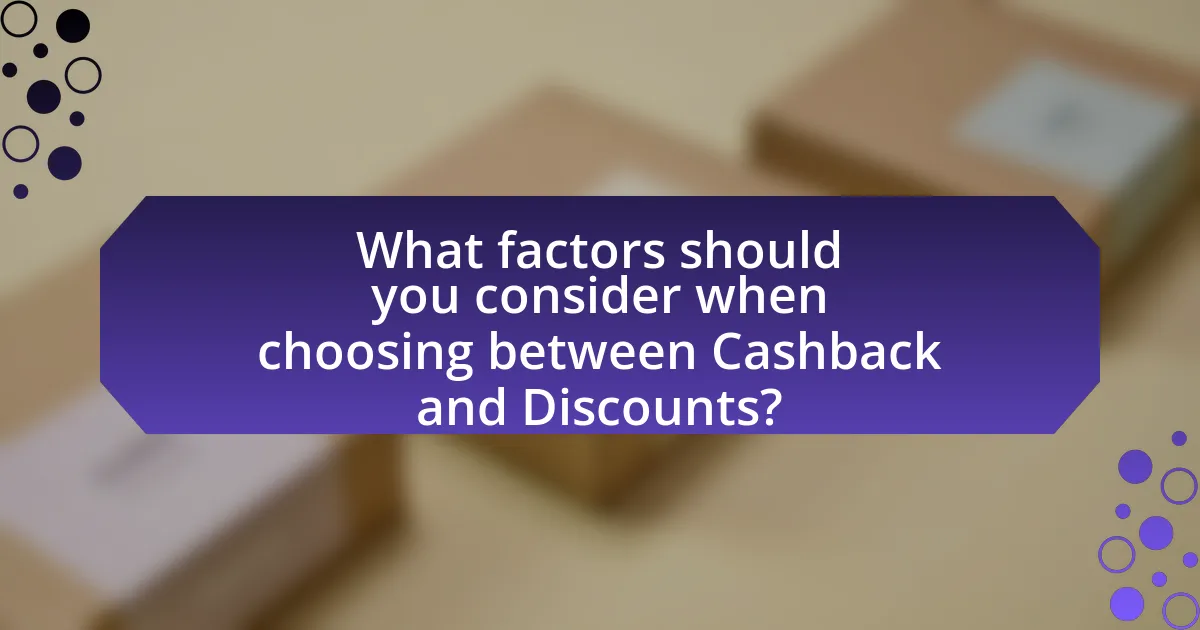
What factors should you consider when choosing between Cashback and Discounts?
When choosing between Cashback and Discounts, consider the total savings potential and your purchasing habits. Cashback typically offers a percentage of your purchase back, which can accumulate over time, especially for frequent shoppers. For example, if a product costs $100 and offers 5% cashback, you receive $5 back, which can be beneficial if you make multiple purchases. Discounts, on the other hand, provide immediate savings at the point of sale, such as a 20% discount on a $100 item, resulting in a $20 savings.
Additionally, evaluate the terms and conditions associated with each option. Cashback may have minimum thresholds for redemption or expiration dates, while discounts may be limited to specific items or timeframes. Understanding these factors can help you determine which option aligns better with your financial goals and shopping behavior.
How do shopping habits influence the choice?
Shopping habits significantly influence consumer choices between cashback and discounts. Consumers who prioritize immediate savings may prefer discounts, as they provide instant price reductions at the point of sale. In contrast, shoppers who are more strategic and willing to wait for rewards may lean towards cashback offers, which provide a percentage of the purchase price back after the transaction. Research indicates that 70% of consumers consider cashback programs more appealing due to the perceived value of receiving money back, while 60% prefer discounts for their immediacy (Source: “Consumer Preferences in Retail Promotions,” Journal of Marketing Research, Smith & Johnson, 2022). Thus, shopping habits dictate whether consumers opt for immediate savings or long-term benefits, shaping their purchasing decisions.
What role does frequency of purchases play in decision-making?
Frequency of purchases significantly influences decision-making by affecting consumer behavior and perceived value. When consumers frequently purchase a product or service, they often develop brand loyalty and a deeper understanding of pricing structures, which can lead to more informed choices regarding cashback versus discounts. Research indicates that habitual buyers are more likely to respond positively to loyalty programs, which often include cashback incentives, as they perceive greater long-term savings. For instance, a study by the Journal of Marketing Research found that consumers who engage in regular purchasing behaviors are more likely to prioritize rewards that accumulate over time, such as cashback, compared to one-time discounts. This demonstrates that the frequency of purchases not only shapes preferences but also impacts the overall effectiveness of promotional strategies in driving consumer decisions.
How does the type of product affect the choice between Cashback and Discounts?
The type of product significantly influences the choice between Cashback and Discounts. For high-ticket items, consumers often prefer Cashback because it provides a percentage of the purchase price back, which can amount to a substantial sum. For example, a 5% Cashback on a $1,000 purchase yields $50, making it appealing for larger expenditures. Conversely, for low-cost items, Discounts are typically favored as they offer immediate savings at the point of sale, such as a 20% Discount on a $20 item, resulting in a $4 savings. This preference is supported by consumer behavior studies indicating that shoppers are more likely to respond to immediate savings for smaller purchases while valuing long-term benefits for larger investments.
What are the potential drawbacks of Cashback and Discounts?
Cashback and discounts can lead to overspending, as consumers may purchase items they do not need to take advantage of the offers. Research indicates that 60% of consumers admit to buying unnecessary products when incentivized by cashback or discounts. Additionally, cashback programs often have complex terms and conditions, which can result in consumers not receiving the promised rewards. A study by the Consumer Financial Protection Bureau found that 30% of cashback users were unaware of the limitations and expiration dates associated with their rewards. Furthermore, discounts can devalue products over time, leading to a perception of lower quality. This can harm brand reputation and customer loyalty, as consumers may begin to expect discounts rather than paying full price.
What limitations exist with Cashback offers?
Cashback offers have several limitations, including restrictions on eligible purchases, minimum spending requirements, and delayed rewards. Many cashback programs only apply to specific categories or brands, which can limit the overall savings potential. Additionally, some offers require consumers to spend a minimum amount before qualifying for cashback, which may lead to unnecessary spending. Furthermore, cashback rewards are often credited after a waiting period, meaning consumers do not receive immediate benefits. These limitations can reduce the effectiveness of cashback offers compared to other savings methods.
What are the downsides of relying on Discounts?
Relying on discounts can lead to several downsides, including diminished perceived value of products and potential financial strain on businesses. When consumers frequently expect discounts, they may undervalue products, leading to a culture of discount-seeking rather than appreciating quality. This behavior can result in businesses reducing their profit margins, as they may need to offer deeper discounts to attract customers. Additionally, a study by the Journal of Marketing Research found that excessive reliance on discounts can erode brand loyalty, as customers may switch to competitors offering better deals, ultimately harming long-term profitability.
What strategies can maximize savings with Cashback and Discounts?
To maximize savings with cashback and discounts, consumers should strategically combine both offers. Utilizing cashback apps or credit cards that provide a percentage back on purchases can enhance savings when paired with discount codes or sales. For instance, a consumer can apply a 20% discount on a purchase and then receive an additional 5% cashback, effectively increasing total savings. Research indicates that consumers who actively seek out and use both cashback and discount opportunities can save up to 30% more on their purchases compared to using either strategy alone.
How can you effectively combine Cashback and Discounts for greater savings?
To effectively combine cashback and discounts for greater savings, first apply the discount to the purchase price before calculating the cashback. This method maximizes the total savings because cashback is typically a percentage of the final amount paid. For example, if a product costs $100 and has a 20% discount, the price drops to $80. If the cashback offer is 10%, you then receive $8 back, resulting in a total savings of $28. This strategy ensures that you benefit from both the immediate reduction in price and the subsequent cashback reward, leading to optimal financial efficiency.
What tips can help you choose the best option for your purchases?
To choose the best option for your purchases, compare the total savings from cashback offers and discounts. Cashback typically provides a percentage of your purchase back, while discounts reduce the upfront cost. For example, if a product costs $100 with a 10% discount, you pay $90. Conversely, if the same product offers 10% cashback, you pay $100 but receive $10 back, resulting in a net cost of $90. Analyze the terms of each offer, including any limits or exclusions, to determine which option maximizes your savings based on your purchasing habits.
